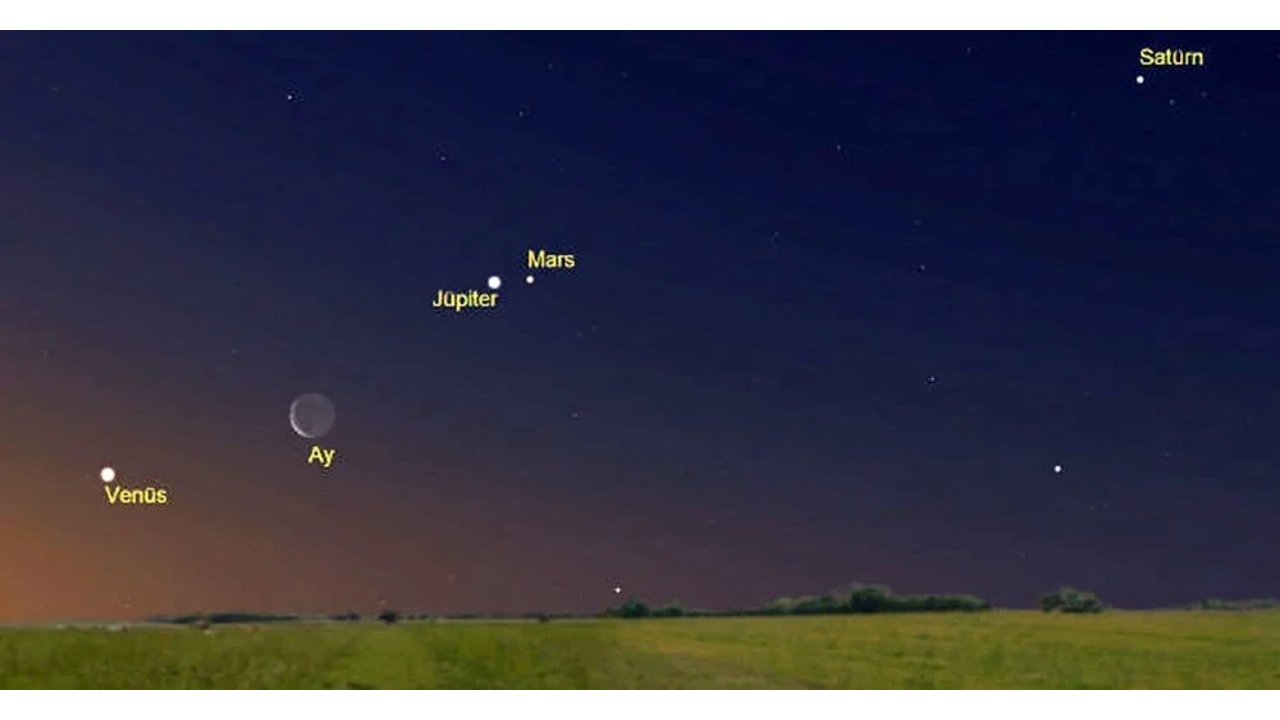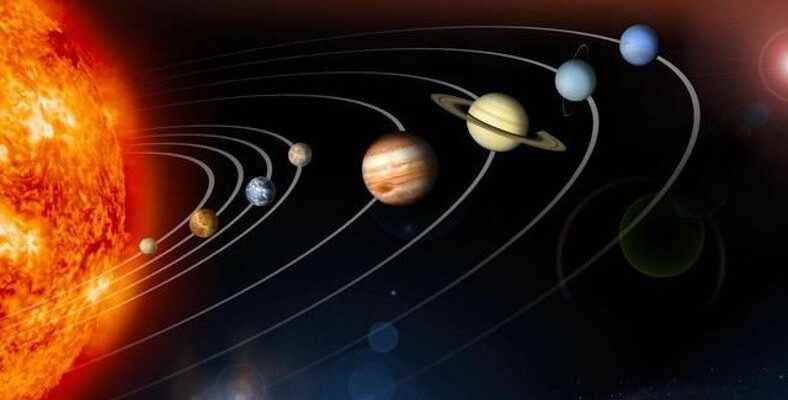On the night we enter the year 2023, a magical celestial event that happens once in 30 years will take place. At the beginning of the year, 7 planets will be visible at the same time, most of them with the naked eye.
Working as the Chief Specialist at TÜBİTAK National Observatory (TUG), Dr. Tuncay Özışık announced that the most important celestial event that will occur in 2022 will take place on the night of December 31, that is, on the New Year’s Eve. In the celestial event that will take place every 20-30 years, 2 telescopes, 5 naked eyes, in the Solar System outside the Earth. 7 planets can be observed simultaneously.
In this interesting celestial event, the planets that can be seen with the naked eye and telescope will be accompanied by the moon of our planet. Stating that a similar event will occur on June 23, Özışık said that the event that will take place on this date should be observed by everyone, since it took place in the early hours. harder said it would.
5 planets can be seen with the naked eye, 2 planets can be seen with a telescope
In his statement, Özışık said, “It will be possible to see and even view all the planets together. If the weather is good on the evening of December 31st, when you look at the western horizon after sunset, it is possible to see 5 planets with the naked eye. Planets Mercury, Venus, Jupiter, Saturn and Mars. For those with a telescope, two more planets will be visible in the same region. Uranus and NeptuneThose who have a telescope can see it. On the evening of December 31, the Moon will be in the sky along with these planets. used the phrases.
Noting that 5 planets can be observed on June 23, Özışık said, “Of course, the distance between them is very different. We will be able to watch 5 planets with the naked eye on June 23, but this is not the case. at sunrise may not be watched by everyone. But 31 December is the last day of the year and can be easily observed by everyone at sunset. he said.
In addition, apart from this celestial event, in the TÜBİTAK National Observatory 2022 Celestial Events Yearbook, by month There are also planets in the sky that can be easily observed with the naked eye.
According to the TÜBİTAK National Observatory 2022 Celestial Events Yearbook, the bright planets and the days they can be observed are as follows:

RELATED NEWS
The Video of the Last Moments We Can See the James Webb Space Telescope Has Been Shared
- On January 6, the Moon, as well as Jupiter, Saturn, and Mercury are on the southwest horizon at sunset.
- Venus and Mars at sunrise on January 28 on the southeast horizon
- On February 4, Jupiter is on the western horizon at sunset, and on February 27, Saturn, Mercury Venus and Mars are on the southeast horizon.
- Saturn, Mercury, Venus and Mars on March 2
- On March 28, Venus, Saturn, and Mars are on the southeast horizon at sunrise
- Venus, Saturn and Mars in the southeast sky before sunrise on April 2
- Mercury is on the western horizon at sunset on April 29
- Venus, Jupiter, Mars and Saturn in the east and southeast sky before sunrise on May 26
- Mercury, Venus, Mars, Jupiter and Saturn in the east and south at sunrise on June 23
- Mercury and Venus on the eastern horizon at sunrise on July 1
- Jupiter in the east at midnight on July 19
- Mars and Jupiter in the southern sky at sunrise August 19
- Jupiter and Saturn in the southern sky at midnight September 30.
- Jupiter and Saturn on the eastern horizon at sunset on October 7
- Mars in the east at midnight on November 11
- Jupiter and Saturn on the southern horizon at sunset on November 30
- All bright planets and Moon in the sky Mars, Moon, Jupiter, Saturn, Venus and Mercury at sunset on December 31
Source :
https://www.ntv.com.tr/galeri/technology/yilbasi-gecesi-7-planet-ayni-anda-gorulacak,6daPcCVHh0mpwgaPzYAhKg/F1J3dSCV3EedjHxJ9AcErA
